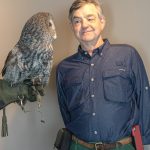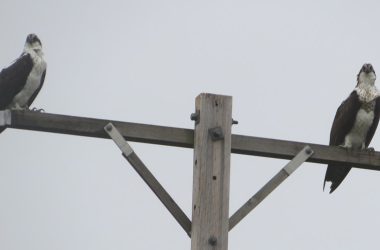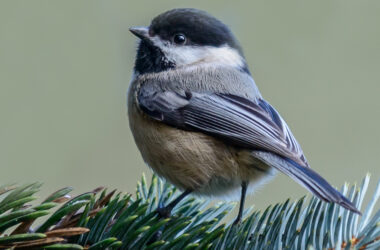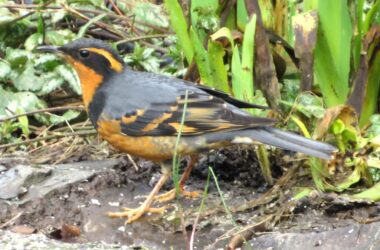My wife and I joined a gathering of awed neighbors one evening in early September. We watched hundreds of migrating Vaux’s swifts gather, storm about, swirl swiftly, form an aerial bagel shape against the sky, curve and careen with flock following flock, then tornado down into a home’s brick chimney. This was in a quiet residential part of northeast Salem.
Eventually they must reach Central America for the coming winter.
We arrived at 7:25 p.m. The swifts were spread across the sky for several blocks. Neighbors had already flocked to the show. Tickets not required.
7:45 p.m. – Sunset. Soon a handful of swifts entered the chimney.
8 p.m. – The flock concentrated, the swirl tightened, the swifts sped more closely together.
8:08 p.m. – The swirl went down into the chimney–dozens of swifts every few seconds.
8:11 p.m. – Nearly all have settled onto a clinging spot inside. They’ll be back out at dawn.
My estimate: 600.
A neighbor told me swifts had not used that house for several years. Ther had picked a house chimney a block away last autumn, he added. The swifts are surely thankful the owners have not capped the chimney cap, nor lined it with slick steel.
A couple nights later: the clear sky may have helped produce a higher count than my previous two nights at this chimney. Bymy estimate, 800. The final tight circle formed quickly and within three minutes all the swifts had funneled into the chimney … except one straggler who took another three minutes. All in by 8:07 p.m.

To enter the chimney, swifts drop, fluttering to maintain good aim at the narrow opening. They are falling, not flying. Once inside the chimney, the light is dim, but they can flutter toward a wall and then feel for a crack with their toes. Each needs an accommodating crevice where it can hang on all night.
The swift family is unusual. They have tiny feet designed for clinging. Swifts can’t walk or perch or safely land on the ground. When not in flight they must find a crevice or ledge from which to hang, heads up.
To nest they must use bits of leaf or blades of grass that are in the air, then glue them together with their sticky saliva. They may also grab small twigs on a fly-by of a tree. Both male and female work on nest building. They will nest in chimneys and hollow trees where they can find them. White-throated swifts will nest in stadia or overpass structures, black swifts behind waterfalls. Vaux’s have begun to use specially crafted nest boxes.
Our Vaux is the smallest swift in North America, less than five inches long. Yet their pointed, thin wings are one foot, tip to tip. They are a 75-cent bird, their 0.6 ounce weight equals that of three Americans quarters.
They can only feed where there are sufficient flying insects. By mid-October all the swifts will have passed us by. They begin returning from their Central American vacation each April.
For information about upcoming Salem Audubon programs and activities, see www.salemaudubon.org, or Salem Audubon’s Facebook page.
Harry Fuller is an Oregon birder and natural history author of “Freeway Birding” and the newly-published “Birding Harney County.” He is a member of the Salem Audubon Society. Contact him at [email protected] or atowhee.blog. His “Some Fascinating Things About Birds” column appears regularly in Salem Reporter.
STORY TIP OR IDEA? Send an email to Salem Reporter’s news team: [email protected].
SUPPORT OUR WORK – We depend on subscribers for resources to report on Salem with care and depth, fairness and accuracy. Subscribe today to get our daily newsletters and more. Click I want to subscribe!

Harry Fuller is an Oregon birder and natural history author of three books: “Freeway Birding,” "Great Gray Owls of California, Oregon and Washington," and "San Francisco's Natural History--Sand Dunes to Streetcars." He leads birding trips for the Malheur Field Station. He is a member of the Salem Audubon Society, and leads bird trips locally. Harry has just published a new book, BIrding Harney County.









